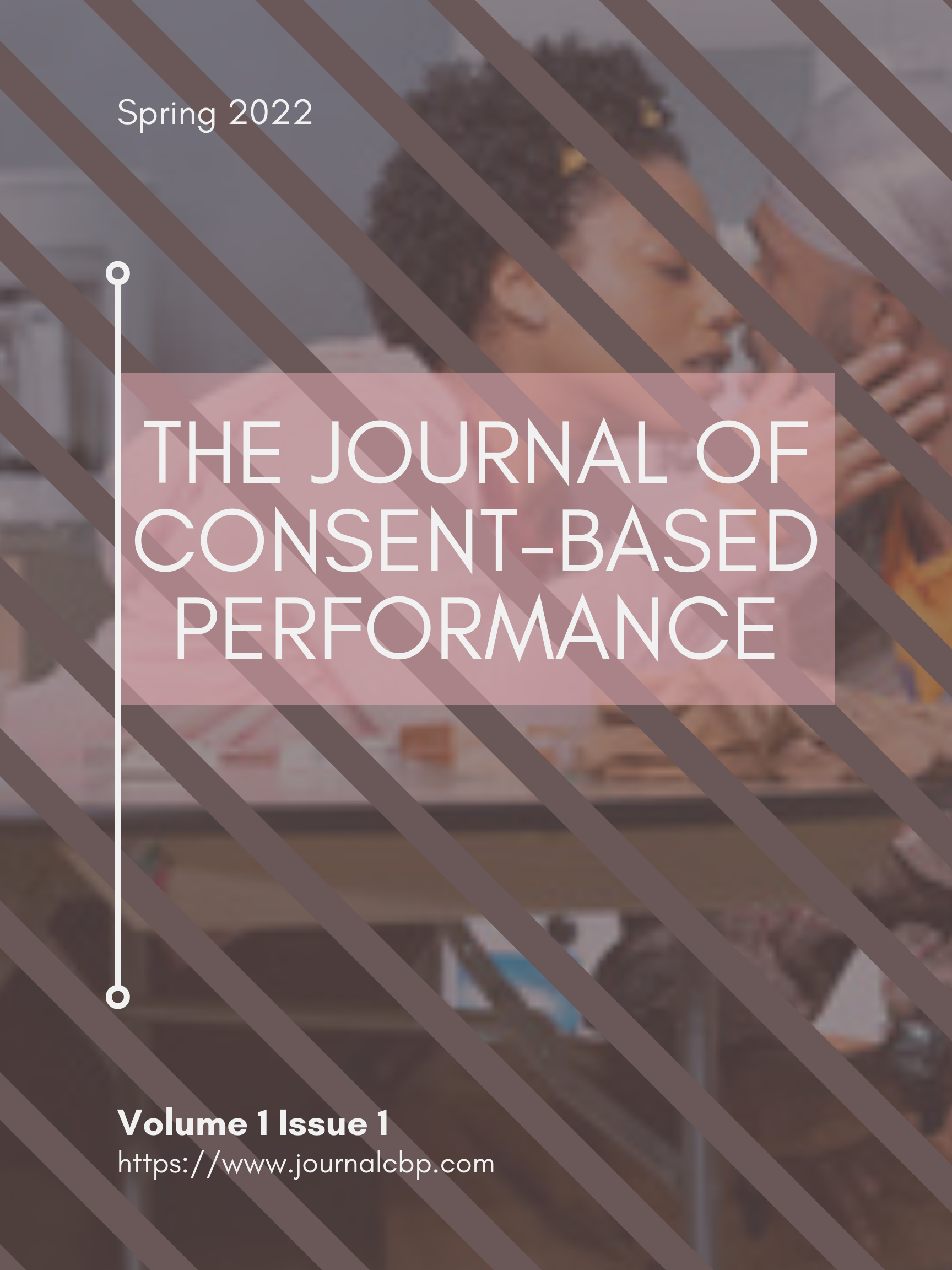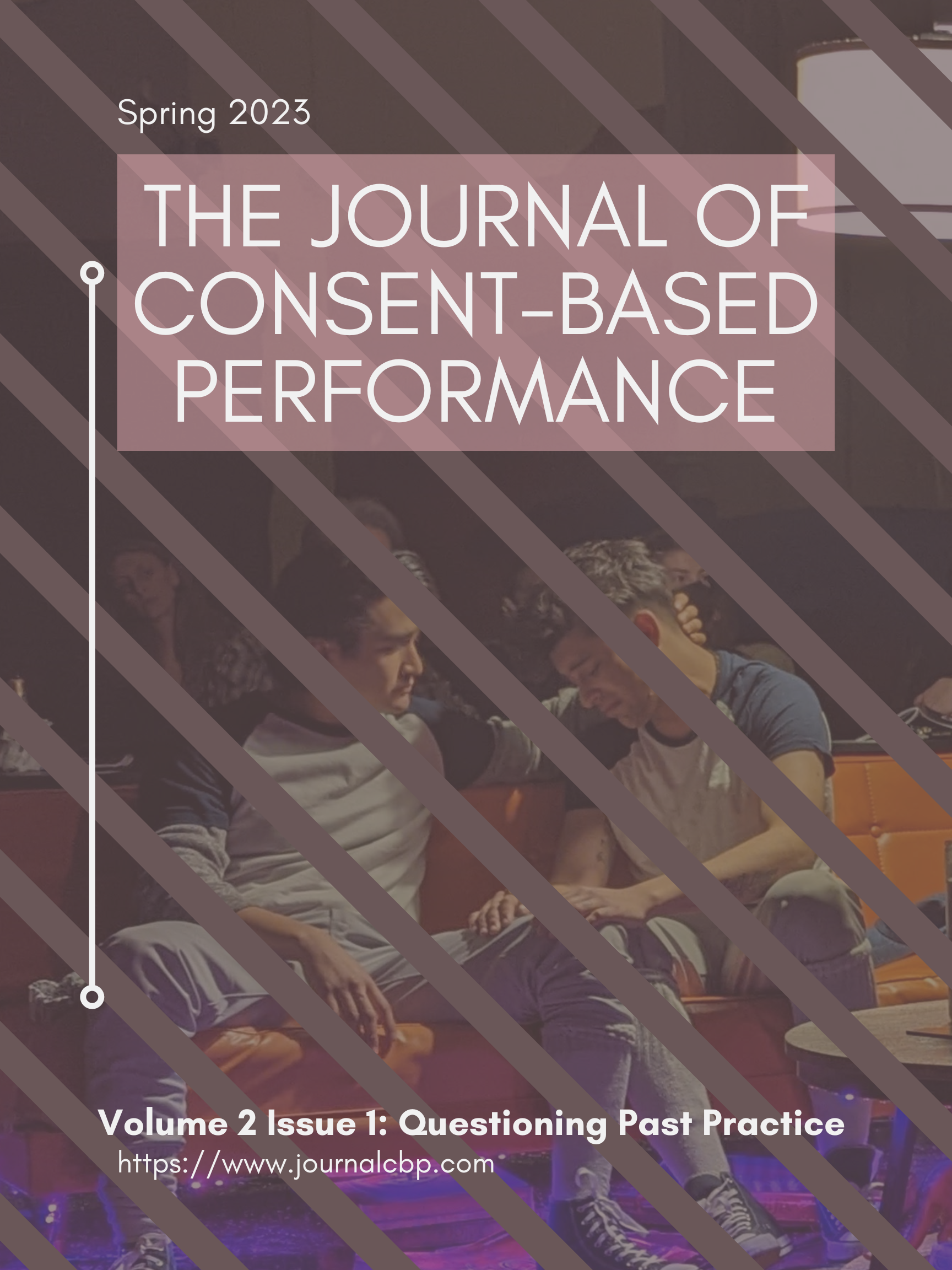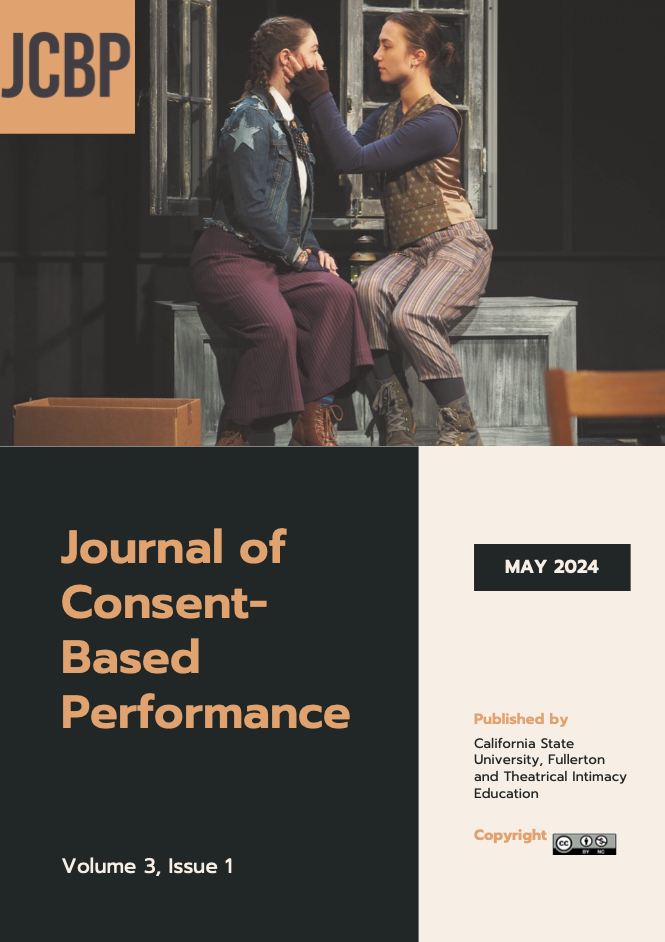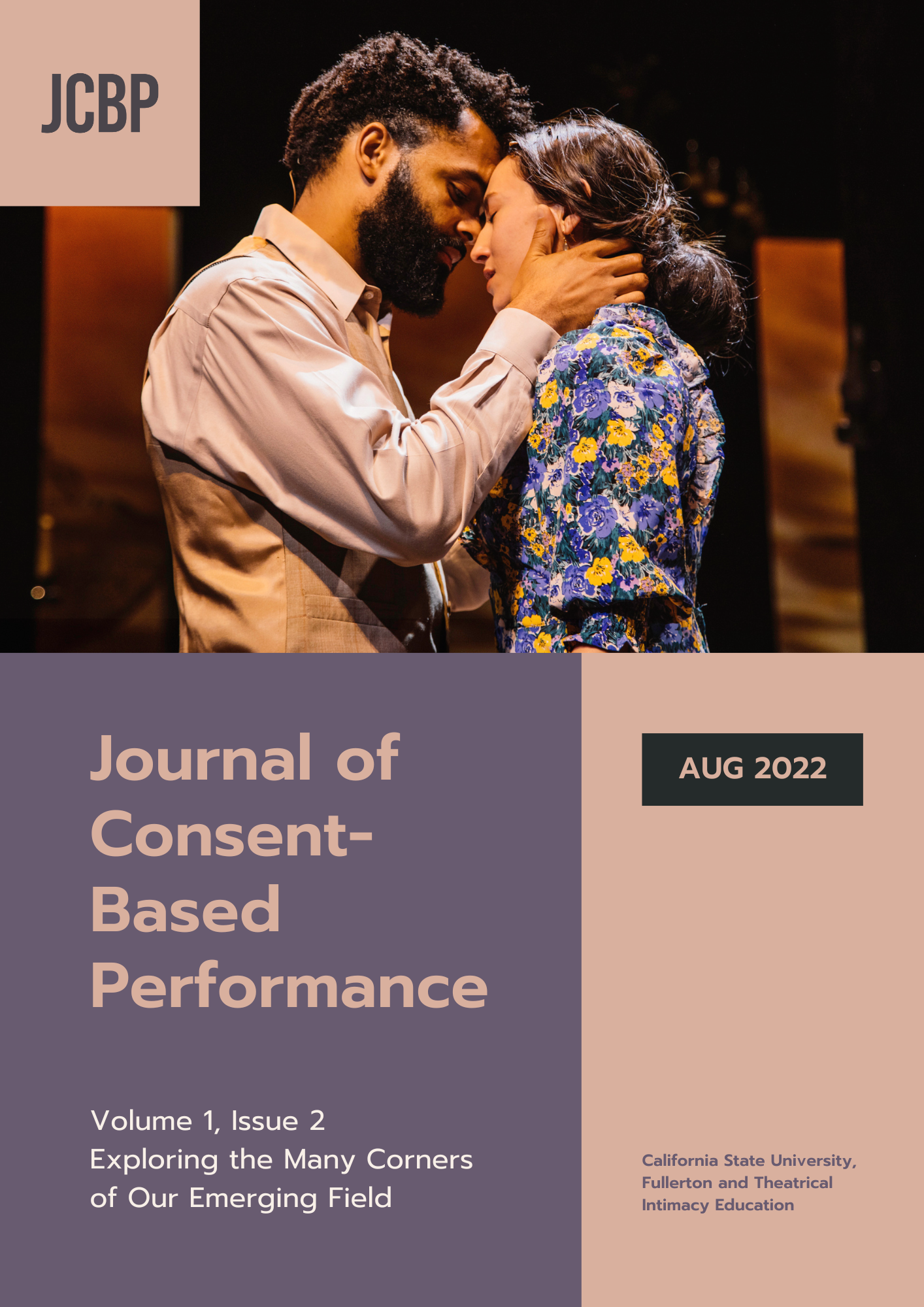Journal of Consent-Based Performance: Praxis and Perspectives on Intimacy
Vol. 1 No. 1 (2022)
Our first issue includes Notes From the Field by Yarit Dor, Kim Shively, Chelsea Pace, and Laura Rikard, as well as Research Articles by Dr. Kari Barclay and Dr. Amanda Rose Villarreal which examine the history of intimacy choreography as well as ground us in this journal's willingness to continue questioning practices used in this field in the hopes of progress.
Questioning Past Practice
Vol. 2 No. 1 (2023)
Volume 2 Issue 1 includes both Notes From the Field and Research Articles which hinge upon analyzing past practices and prompting new developments within consent-based creative processes.
Consent in Distinctive Contexts
Vol. 3 No. 1 (2024)
This issue examines the ways that consent-based performance practices are being or have been applied outside of working as an IC. Notes and Articles published in this issue comment upon consent-based performance in diocesan settings, in dramaturgy, in improvisation and gamified performance, and in historical contexts.
Exploring the Many Corners of Our Emerging Field
Vol. 1 No. 2 (2022)
Our second issue features writing by current undergraduate students, graduate students, and professionals working in theatre in higher education as well as those working as intimacy choreographers and directors.
Notes From the Field: Identity, Inclusion, Intimacy Choreography, and Cultural Competence
Vol. 2 No. 2 (2023)
A themed issue edited collaboratively by Amanda Rose Villarreal, Cessalee Smith-Stovall, and Mya Brown.
Acknowledging that no individual’s experience can speak for an entire community, the editors have curated a collection of reflections that we hope will serve as a reminder of the vast multidimensionality of intersecting identities that impact our lived cultural experiences and our approaches to communicating and creating. We hope these six Notes From the Field can serve as an invitation to consider the cultural competencies we hold and those we lack outside of the limitations of a binary, encouraging our consideration to include the vast and intersecting cultural identities that inform the multidimensionality of each individual artist. We hope that this selection of Notes serves as an invitation to recognize, and reflect upon the value of, our own lived cultural competencies, rather than assuming that all of our collaborators share our perspectives, boundaries, and needs.
Consent is an Access Issue: Rethinking Disability, Accessibility, and Consent-Based Theatre Practices
Vol. 3 No. 2 (2025)
In approaching a second themed issue, the editorial board reflected upon this statement, asking ourselves: where might assumptions most often be derailing efforts to promote consent and equity within our work? as well as asking whose disenfranchisement is most often assumed to have been addressed without awareness of the human’s true needs and without their input?
In collaboration with Guest Editor Dr. Catherine Vrtis, we curated an issue that highlights Access Intimacy, Accessibility, and steps that consent-based practitioners can take to counteract the ableist practices we've inherited. Changing the ableist expectations of profession and culture will not be easy, but it is absolutely necessary; consent is an access issue, there can be not Disability Justice without it.






